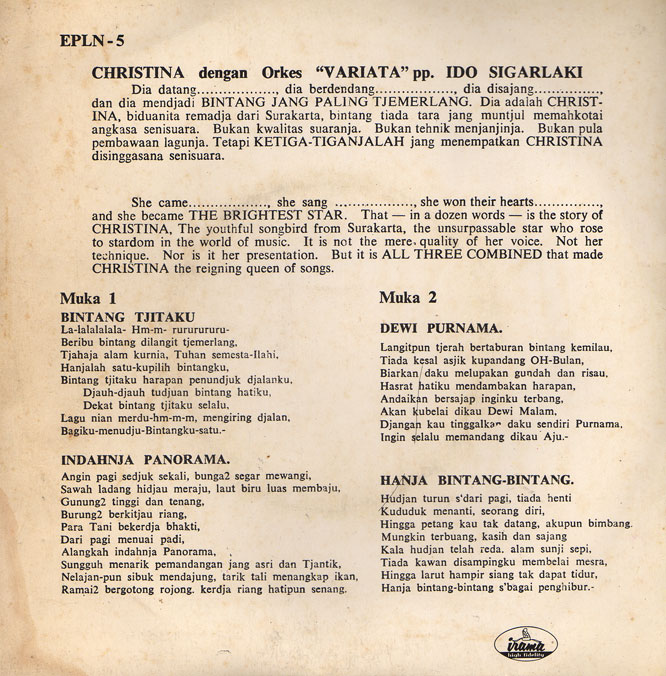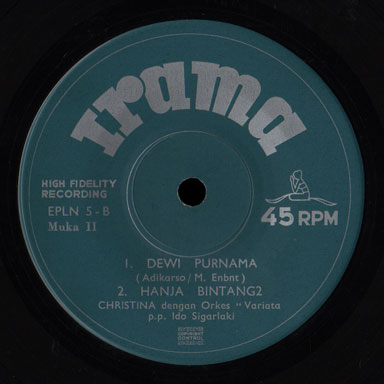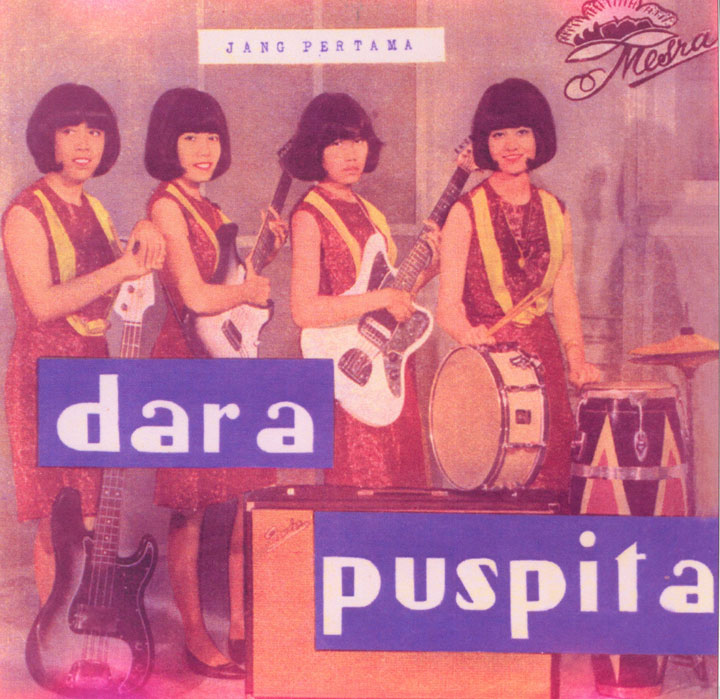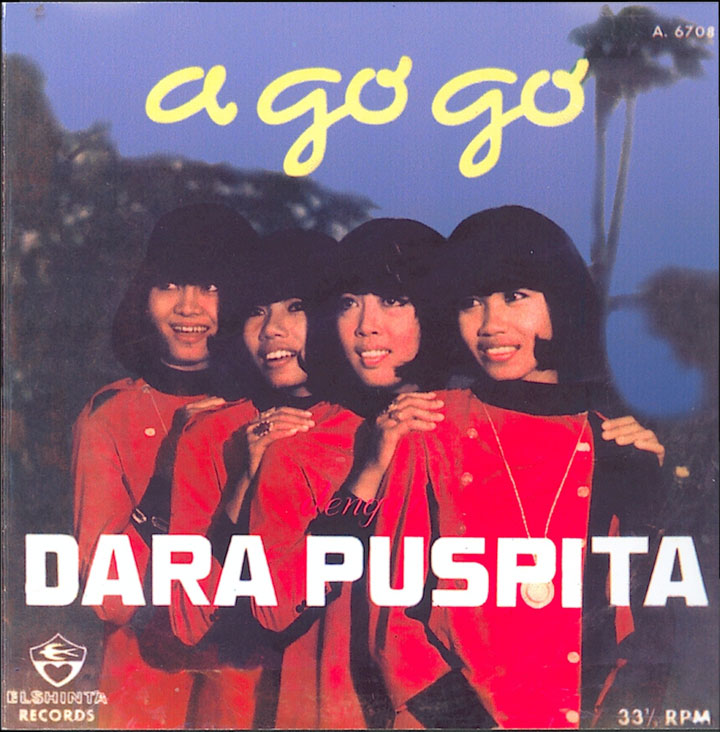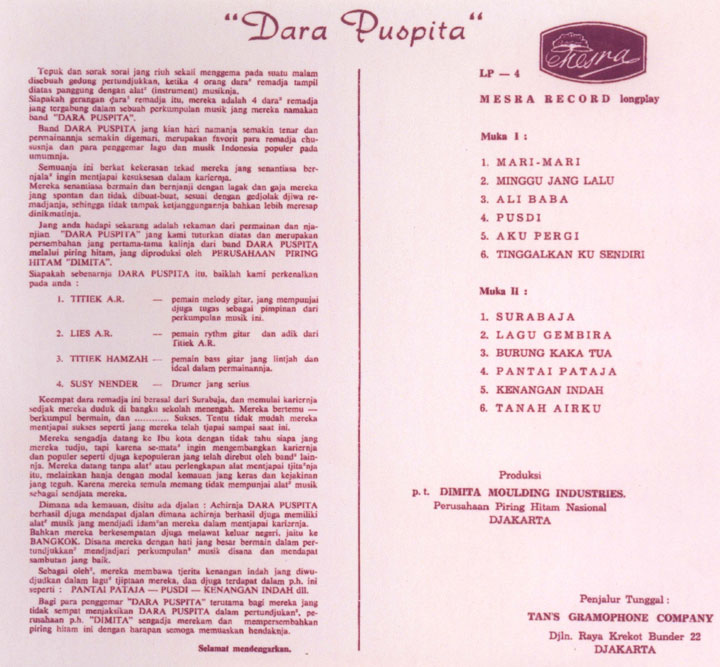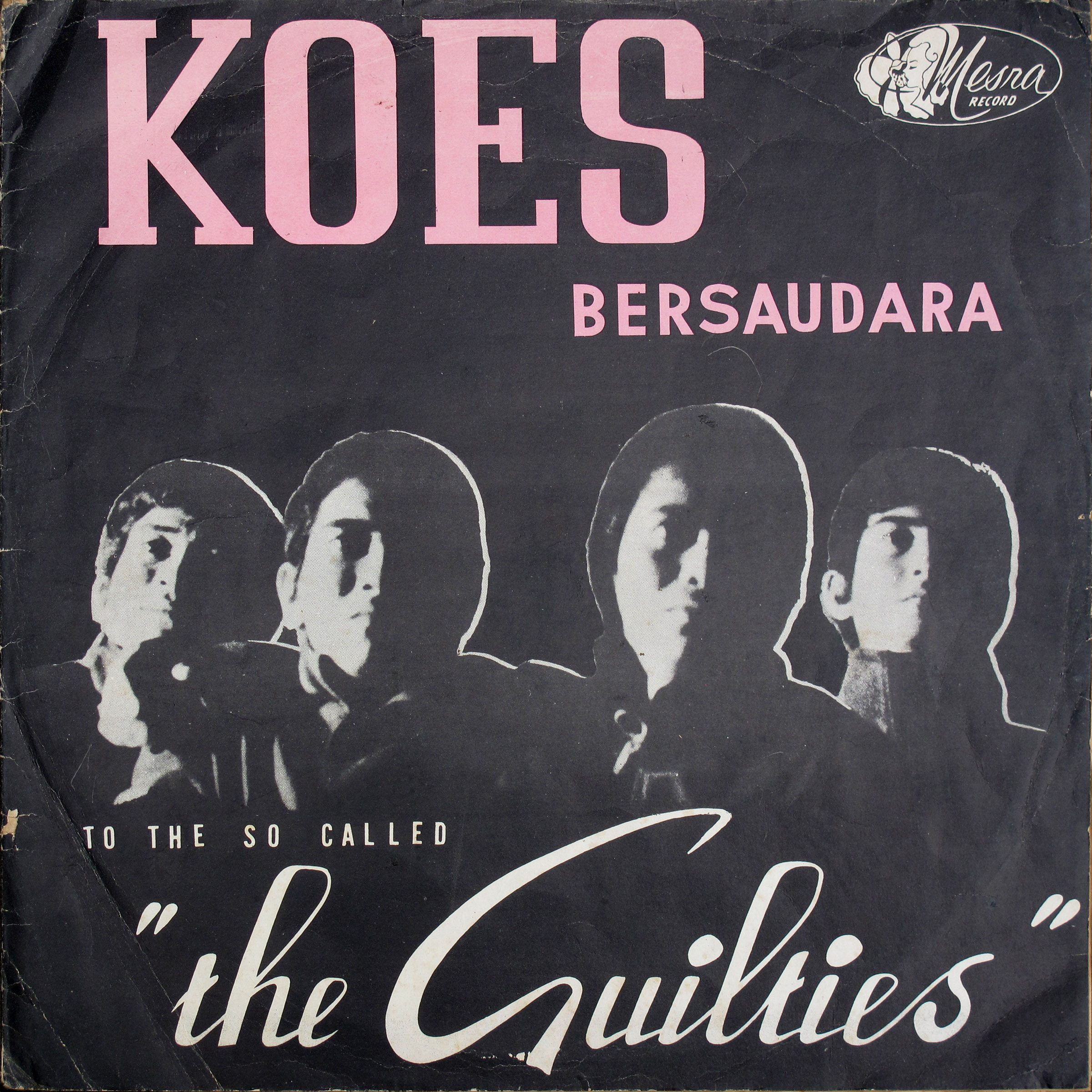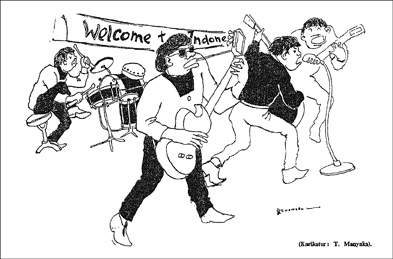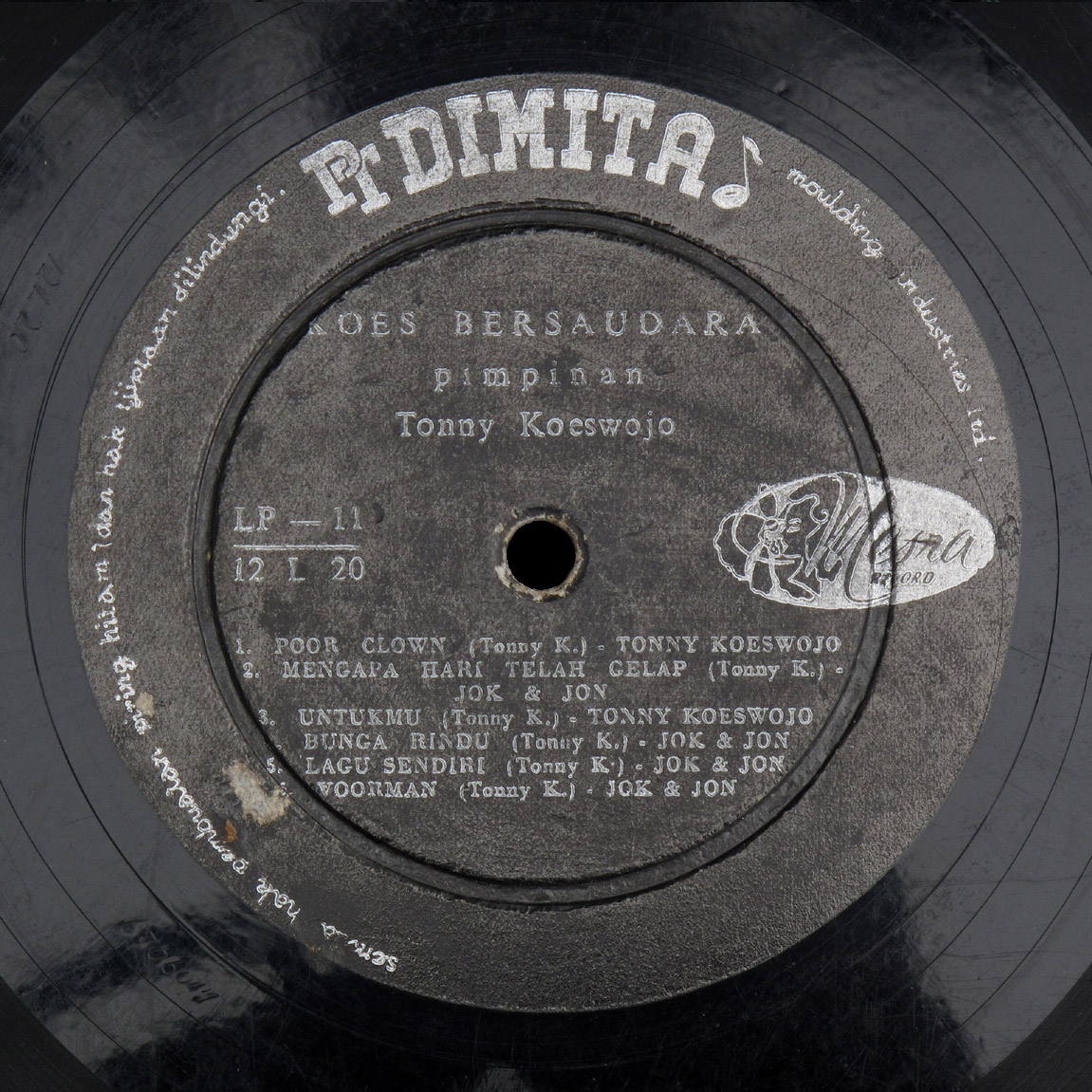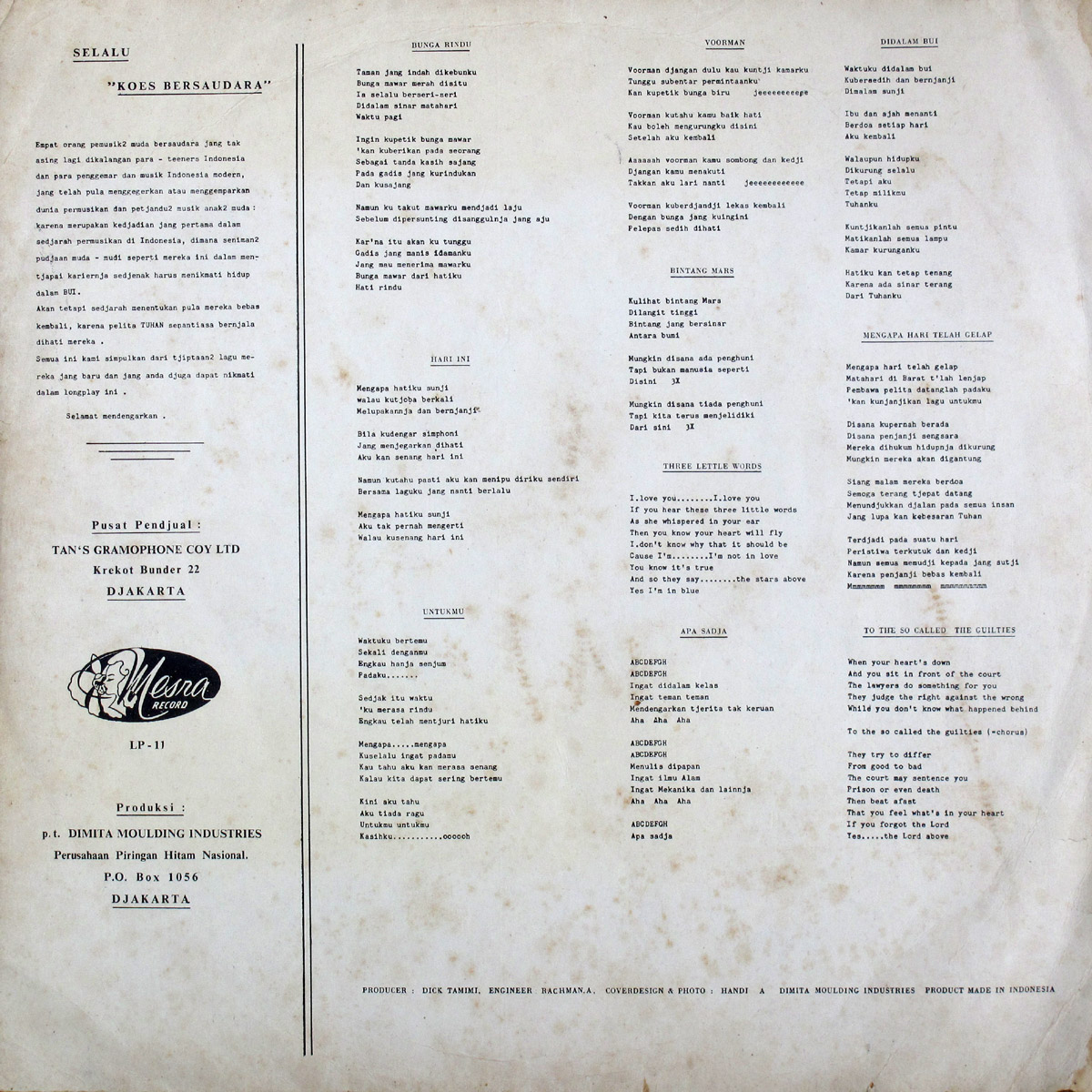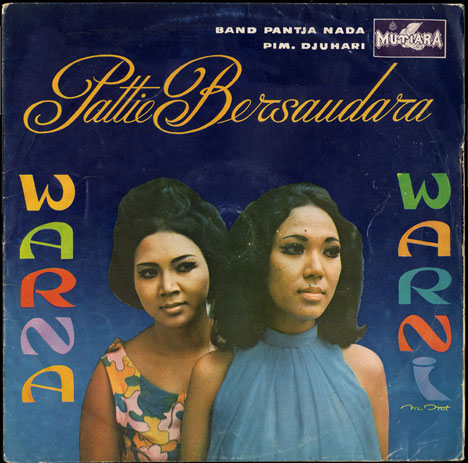
This EP by Indonesian singer Christina is on the light side – garage fans may find this to sound like lounge music. It has grown on me as I’ve played it more, especially the last song, Hanja Bintang Bintang. I’m presenting this for those who dig obscure Asian pop of the ’60s.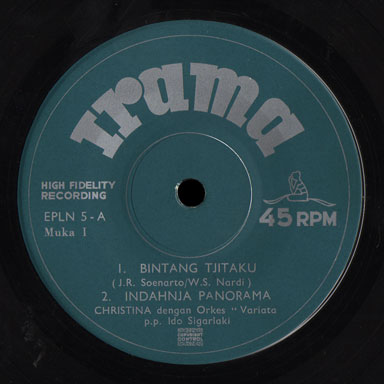
I knew next to nothing about her so I asked Steven Farram to fill us in:
Christina was a young singer from the city of Surakarta (also known as Solo) in Central Java, Indonesia. She is supposed to have made only a handful of records before she disappeared from the scene, but I have only ever seen this one, which probably dates from 1966 or 1967. Why Christina did not have a longer career, I do not know, as she shows on this EP that she was a fine singer. She is said to be a cousin of the much more famous Tetty Kadi, but I do not know if that is true. The Irama (Rhythm) label that this record appears on carried many popular Indonesian artists during the 1960s, including Kus Bersaudaura (as Koes Bersaudara was originally known) and Lilis Surjani. Irama was already putting out records in the 1950s as 78 rpm discs.
On this EP Christina is backed by Orkes Variata (Variata Orchestra) led by Ido Sigarlaki. The first song is Bintang Tjitaku (My Star of Hope) in which Christina chooses one of the stars in the night sky to by her guide to help her find ‘the star of her heart’. The following song, Indahnja Panorama (Beautiful Panorama), has Christina telling us of the beauty of flowers, birds, mountains, the sea, rice fields and people working joyfully in the fields and fishing. Sounds like she is in love! Indahnja Panorama was also covered in the early 1970s by Singapore’s living legend, Anita Sarawak. The flip side begins with Dewi Purnama (Goddess of the Full Moon) where Christina tells how looking at the full moon gives her hope and makes her forget all her restlessness and feelings of dejection. She asks the moon to never leave her and tells her that if she had wings she would fly up and caress the Goddess of the Night. The last song, Hanja Bintang-Bintang (Only Stars), begins with Christina sitting alone on a rainy morning waiting for someone to arrive. By the afternoon she is worried that her lover has given her up. At last the rain stops, but the night is quiet and lonely. All night she couldn’t sleep and had only the stars for company.
